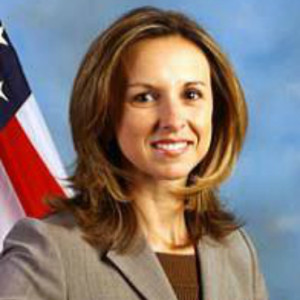 Director of National Intelligence James Clapper has named a career FBI analyst and an Iraq War veteran to head up the cyber intelligence center that the White House ordered created after the massive hack of Sony Pictures Entertainment.
Director of National Intelligence James Clapper has named a career FBI analyst and an Iraq War veteran to head up the cyber intelligence center that the White House ordered created after the massive hack of Sony Pictures Entertainment.
Tonya Ugoretz, the FBI’s former chief intelligence officer, will head the Cyber Threat Intelligence Integration Center. She has done stints at the CIA, Department of Homeland Security and National Intelligence Council, and is listed as an adjunct associate professor at Georgetown University.
Maurice Bland, who most recently was the National Security Agency’s associate deputy director for cyber, will serve as Ugoretz’s deputy. Bland has done two combat tours in Iraq and Afghanistan, according to his official biography.
Ugoretz and Bland could be talking face-to-face with President Obama following the next large-scale hack of U.S. assets.
Clapper also tapped Thomas Donahue, a nearly three-decade veteran of the CIA with a PhD in electrical engineering, as CTIIC’s research director. The center will “build understanding of cyber threats to inform government-wide decision-making,” Clapper said in a statement.
The White House announced the creation of CTIIC last February. It is based at the Office of the Director of National Intelligence, and is modeled after the National Counterterrorism Center in an effort to “connect the dots” on cyber threats. Michael Daniel and Lisa Monaco, respectively the top White House advisers on cybersecurity and counterterrorism, have been the driving forces behind CTIIC, according to an administration official involved in the agency’s standup.
CTIIC is meant to fill a void in the bureaucratic chain of command wherein Obama had no one entity to turn to for an all-source briefing on foreign cyber threats. That void became abundantly clear to White House officials after the digital destruction of Sony Pictures’ IT systems in November 2014.
The agency got off to a rocky start. House lawmakers were irked that they didn’t get a heads-up on its creation, and DHS officials were worried that the new agency might encroach on their own work.
But several months later, agency turf battles that appeared ready to unfold have been quieted, and there is agreement on Capitol Hill on the need for CTIIC, according to the administration official. The omnibus package funding the government this fiscal year includes money for CTIIC; the exact amount of funding is classified.
“CTIIC is vital because the foreign cyber threats we face as a nation are increasing in volume and sophistication,” DHS Deputy Secretary Alejandro Mayorkas said in a statement. “The CTIIC will help DHS better understand various cyber threats and provide targeted intelligence community support” to the department’s own cyber threat center.
Bland’s battlefield experience could come in handy, as there is increasingly a cyber dimension to kinetic war. A key to the “surge” of U.S. troops in Iraq in 2007 was an accompanying surge in cyber weapons that the NSA unleashed, as journalist Shane Harris reported in his book “@War.”
Bland’s LinkedIn profile touts his experience “leading numerous efforts regarding the organization of cyber units, policy, and authorities related to cyber operations.”

